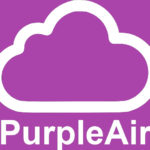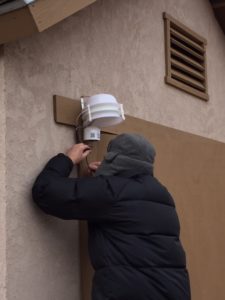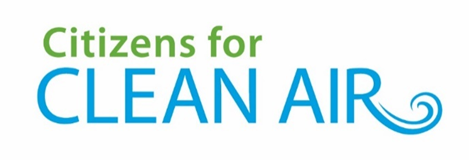Air Monitoring Projects
Air Quality Monitoring Studies for the Grand Valley Provide Data and Improve Understanding.
PARTICULATES MONITORING PROJECT
The Challenge
Within the Mesa County air shed, there is one state-managed high-end particulates monitor, located at the top of the Powell Building in downtown Grand Junction. Yet particulate concentrations are likely to vary dramatically across the valley because of its varied terrain. Limited coverage of one monitor hinders our understanding of what may be taking place. In turn, this limits our ability to provide good data, necessary to address community concerns about the health effects. Even short term exposure to high levels of particulates can cause problems, especially for children, outdoor athletes, the elderly, and those who already suffer from respiratory and other ailments.
The Project

Monitoring Maintenance
In 2018, after several years of reviewing a range of air quality monitors, Citizens for Clean Air (CCA) identified a low cost, reliable option that produces high quality data for particulates. We are utilizing monitors manufactured by “Purple Air”, an LLC with headquarters in Utah (https://www.purpleair.com) to collect and report particulate activities in our region. Weather Underground, a company owned by IBM, has endorsed it. And the Utah Department of Environmental Quality reports Purple Air data on their website, as does Mesa County Public Health.
CCA did our own in-house evaluation, comparing Purple Air monitor values to those of the state particulates monitor in downtown Grand Junction. In an initial assessment, the results from the two monitors were surprisingly close. To provide ongoing quality control, a Purple Air monitor is being located near the state monitor, with assistance from the Colorado Department of Public Health and the Environment.
Current Status
Thanks to individual donations, CCA purchased, placed and now services over 30 monitors across the Grand Valley. Additional monitors were subsequently purchased by individuals, and monitors continue to be added to areas along the I-70 corridor due, in part, to a broad educational effort initiated by Alpine Bank. Indoor particulate monitors have become increasingly popular, and can also be purchased by individuals. An area map shows an aerial view of locations where monitors are installed and reporting, and anyone with a computer can visit the map and see real time data as well as other information:

GROUND LEVEL OZONE MONITORING
The Citizens Ozone Monitoring Project was initiated in 2019.
The Challenge
On the outskirts of Palisade on the eastern end of the Grand Valley, a state-managed, high-cost sensor collects data on ozone levels. Although well-placed, CCA determined that, due to the varied locales of the Grand Valley, having more sensors placed strategically throughout the area, would present additional, valuable information. For example, monitoring high vehicle traffic areas, agricultural acreage and outlying locations affected by winds may show higher levels of ozone and possibly indicate sources. Exposure to ozone can trigger several health effects and aggravate lung diseases such as asthma, emphysema and chronic bronchitis.
The Project

Tri Sensor Installation
Two years of research resulted in identifying low cost, reliable ozone sensors, manufactured by the New Zealand company Aeroqual and sold in the US by Oxidation Technologies, and custom designed to connect to the PurpleAir (PA) monitoring mother boards. PurpleAir also provided particulate monitors and developed a weather-resistant enclosure to hold both the ozone and particulates monitors with an added VOC (volatile organic compound) sensor (Bosch Sensortec BME680). This combination of sensors uses Purple Air’s system of Wi-Fi communication to log the particulates, ozone and VOC data and display them on the PurpleAir, web-based mapping software. A Professor of Chemistry at Colorado Mesa University provides technical expertise on evaluating data quality, and Mesa County Public Health incorporates the data into their air quality surveillance system to better understand the factors impacting air quality in Mesa County. The Colorado Department of Public Health and Environment provides consultation. Grant funding from the Western Colorado Community Foundation enabled the project to move forward. CCA is grateful to our private donors as well.
Current Status
Six working models, dubbed “Tri-sensors” have been deployed across Mesa County and are delivering real-time ozone and particulates data from different locations. The data is reported in real time on an experimental PurpleAir mapping system, not yet available to the public, but provided to interested parties. Compared to the state-managed high-end ozone monitor in Palisade, these lower cost models have so far provided reasonably reliable data. Data from the VOC sensors is not considered reliable yet. The Tri-sensors are located at the east, west and south ends of the Grand Valley as well as centrally. Plans are in place to set up a Tri-sensor close to the state managed hazardous air pollutants (HAPS) collection site in downtown Grand Junction, which will allow us to explore the relationship between particulates, ozone and HAPS, as identified by the EPA.

